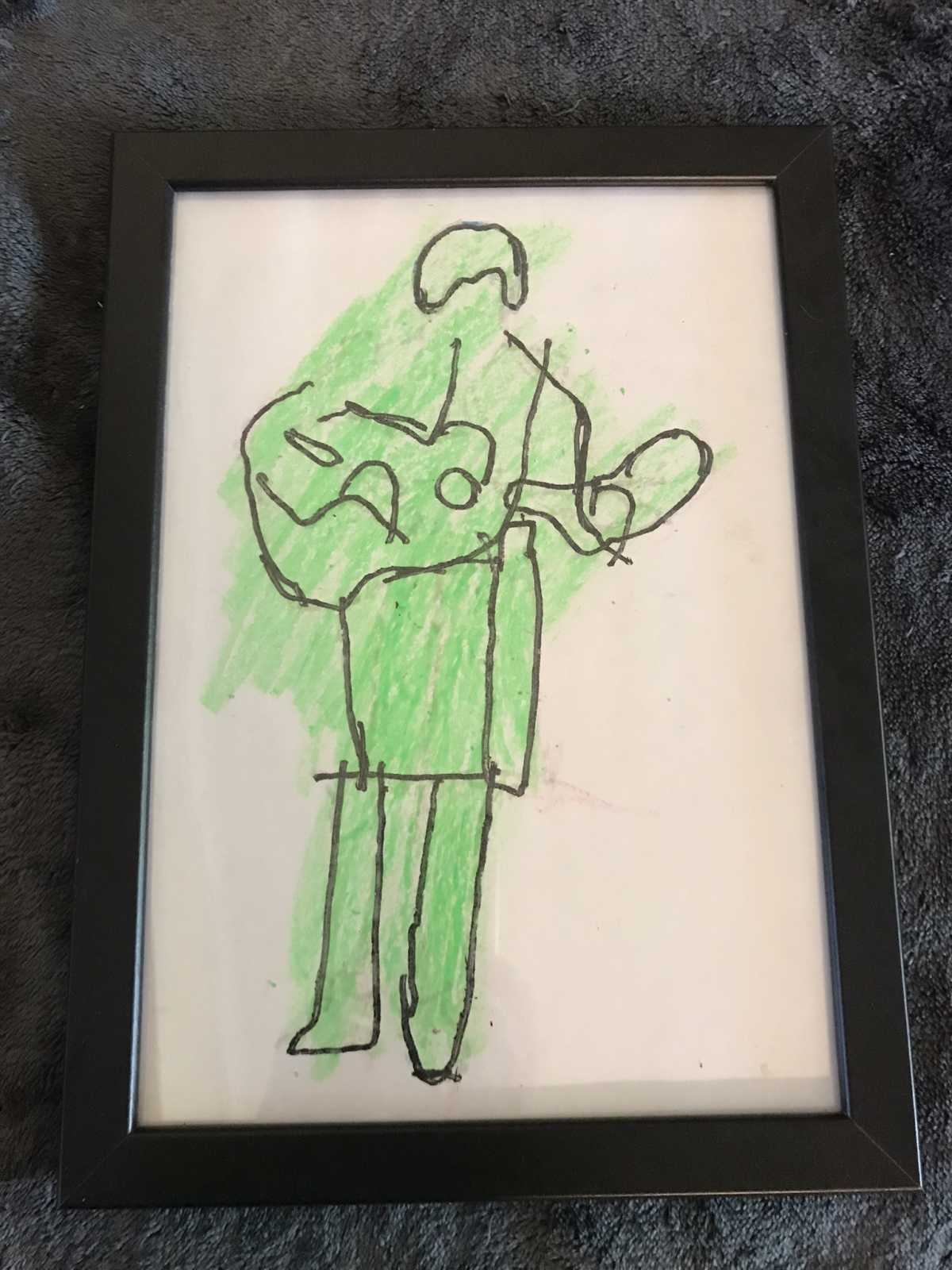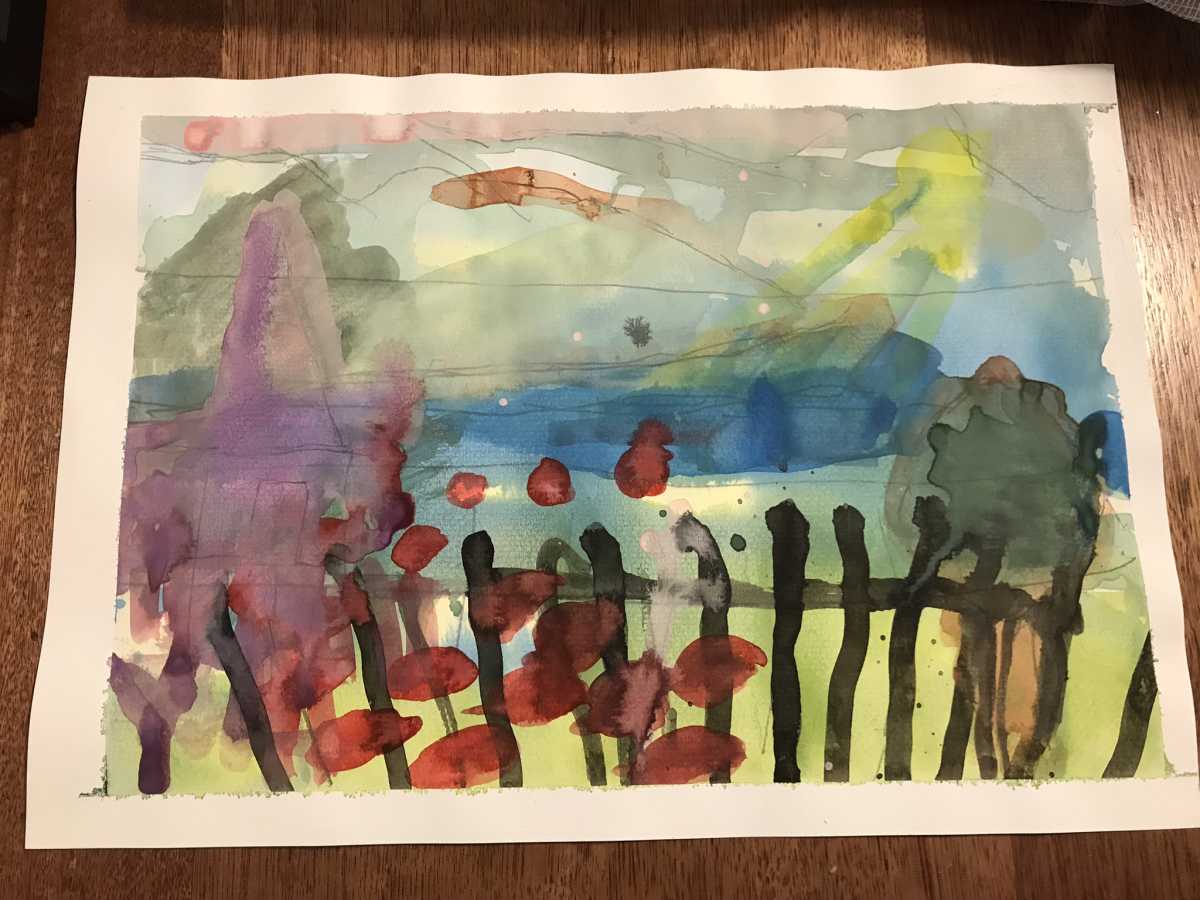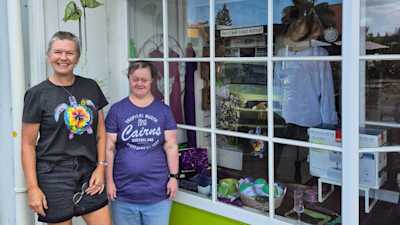Since partnering with her support team and the right art therapist, Emily’s talent as an artist has bloomed.

Part of providing great support is knowing a person well enough to find the best partner to give them what they need.
Emily* has been creating art most of her life but only recently started painting. One of the ways she explores her artistic talents is in one-on-one sessions with her art teacher and therapist, Mike.
Emily is non-verbal but has her own very extensive sign language vocabulary. It’s her personal evolution of what she was taught in school. She adds new signs, building on her language, and keeps challenging people to keep up.
Robyn, a Life Without Barriers Team Leader who has worked with Emily for ten years, said, “I know a lot of Emily’s signs, but Emily’s mother and Warren, who has worked with Emily for 16 years, are the only two people who know all her signs.”
During one art session, Emily was asked, “What is your favourite colour?” Emily swept her hand across herself. “Green?” asked Mike, who was chuffed when told he was right.
The artist at work
Today, Emily started her art session by copying an image of London’s Big Ben. She precisely followed a dotted outline on a sheet of paper. After the practice run, she painted the scene on a new sheet of blank paper. Mike guided her when needed, but Emily was very much in control. With confident strokes, she painted the rivers, then the straight lines of the building’s spires, towers and Big Ben. Then she added her own interpretation of dimensions, shapes and placement.
Mike said, “Emily has a distinct style. She paints careful, orderly lines, and she loves the repetition of patterns. Then she will go freestyle and add her own fluid 'Emily' touch. Watercolour is a good medium for her.
"She can feel the brush, and working with the watercolours takes her somewhere else.”

Mike explained they are working on musical themes. Emily has a connection to England (where she was born), and she has been painting images based on English songs and rhymes. Earlier, she drew images based on The Beatles, where her distinctive style can be seen again.

“My favourite Emily painting was inspired by The Beatle’s Here Comes The Sun. She wanted to express the happiness she feels when the rain ends and you can put your umbrella down." Shared Mike.
"In her picture, Emily shows beautifully how, on the left, the sky is grey and gloomy, but on the right, when the sun comes out, the world can be full of clear, bright colours.”

Art as a language
Emily uses art to express her feelings and concerns in the moment. She often uses drawings to document her day and dictates the story to go with it. Barbara, Emily’s mum, said, “It's a real expression of her idiosyncratic way of seeing the world.”
There is art displayed in Emily’s bedroom of her favourite things - like drinking tea, her teddy bear, and her mum’s home. Her art has also captured significant moments, like a day at the beach, holidays and even the triumph of overcoming constipation. The walls are an art album of Emily’s life.

Throughout the art sessions, Emily makes sure different things discussed are noted in her diary. She has a personal one which her support workers help her with, and a separate one for her art sessions with Mike.

Flourishing in the right environment
“Emily has a natural talent for art, but she does not always want to do it. It has to be the right environment,” said Warren, Emily’s support worker.
“It’s great to see Emily so calm and happy."
"We’ve seen a huge shift in her mood since the introduction of these art sessions, and with more focused and individualised support in general. She can get stressed and overwhelmed if she is with too many people or if she is with someone she is not comfortable with,” said Warren.
Robyn agreed, “She used to get very upset up to 25 times a month – that’s nearly every day. And now, she may get upset a couple of times a month, which is life.”

Anyone spending time with Emily will soon observe that Emily knew exactly what she wanted. It would be frustrating not to be understood.
Thankfully, Emily has people who really see and hear her and deeply care about her well-being. They understand that art is both her language, a vehicle to her happy place, and a way to capture moments that are important to her.
A person's story is precious. We take storytelling seriously. Sometimes people are able to tell their own story, and we love that. We always make sure they give us their ok, and we will always honour the trust placed in us to bring their story forward.
*Names have been changed to protect the participant in this story.


